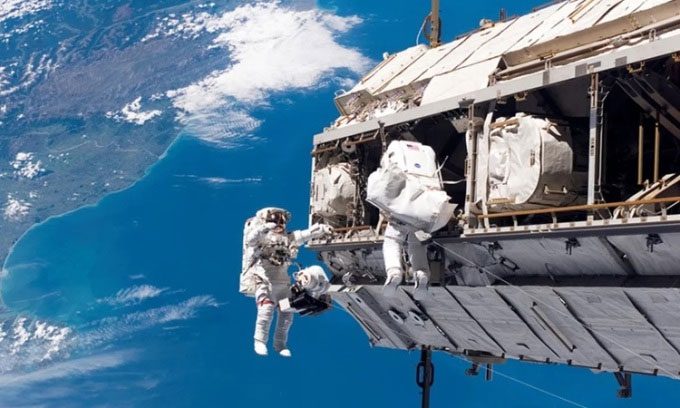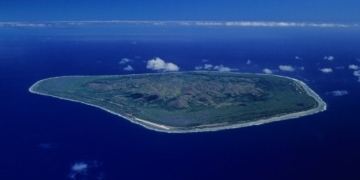Due to the differences between the space environment and Earth, the human body undergoes several changes such as nail shedding, facial swelling, osteoporosis, and muscle atrophy.
Nail Shedding
The International Space Station (ISS) and many other stations, as well as spacecraft, are artificially pressurized so that astronauts can breathe and survive in the vacuum of space. When astronauts go on spacewalks, their spacesuits are also pressurized to ensure their safety and health. However, astronauts often experience various injuries, including onycholysis, a condition where the nail plate separates from the nail bed underneath. According to NASA, hand injuries are quite common among astronauts training for space activities. When gloves are pressurized, they restrict movement and create pressure points throughout the mission, sometimes leading to pain, muscle fatigue, skin abrasions, and more severe conditions such as onycholysis.

Astronauts performing a spacewalk outside the ISS. (Photo: NASA).
Seeing Flashing Lights
During the Apollo program, many astronauts reported seeing mysterious flashes of light. A survey of 59 astronauts found that 47 experienced these flashes during flights, mostly before going to sleep. Research indicates that these flashes are predominantly white and elongated, often accompanied by a sensation of movement. These flashes are believed to be the result of cosmic rays passing through the astronauts’ retinas, although the exact mechanism remains unclear. Some of the flashes may be caused by the direct ionizing interaction of cosmic rays with the retina.
Baby Feet
Due to the lack of frequent movement, the feet get a break; however, the downside is that calluses will disappear, according to astronaut Scott Kelly. “As a result, the soles of my feet become very soft, like a baby’s feet. But the tops of my feet are rough like crocodile skin because I use that area to move around the space station on the slide,” Kelly shared.
Swollen Face
When on Earth, gravity causes most of the body’s fluids to distribute below the heart. In contrast, the lower gravity environment in space allows body fluids to disperse more evenly. When astronauts first travel to space, they may feel cold and experience a swollen face, but this condition typically lasts only a few days.
Osteoporosis and Muscle Atrophy
Living on the ISS for an extended period can lead to a decrease in muscle mass and bone tissue as the skeletal muscles do not need to support weight in a microgravity environment. To mitigate these effects and maintain mobility upon returning to Earth, astronauts must exercise regularly, such as using a treadmill. After returning to Earth, they need to work out for a period to regain the muscle mass and physical condition they had before.


















































